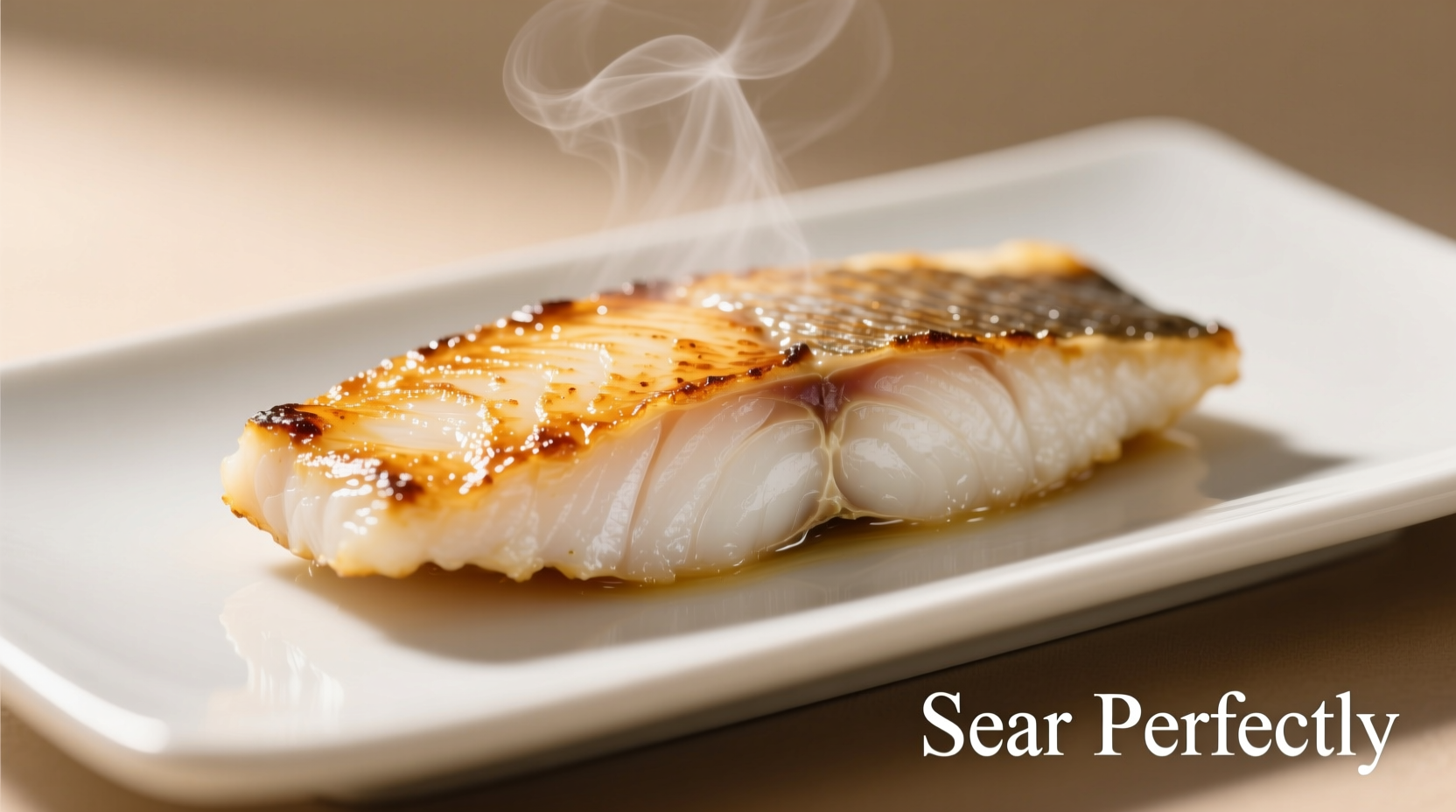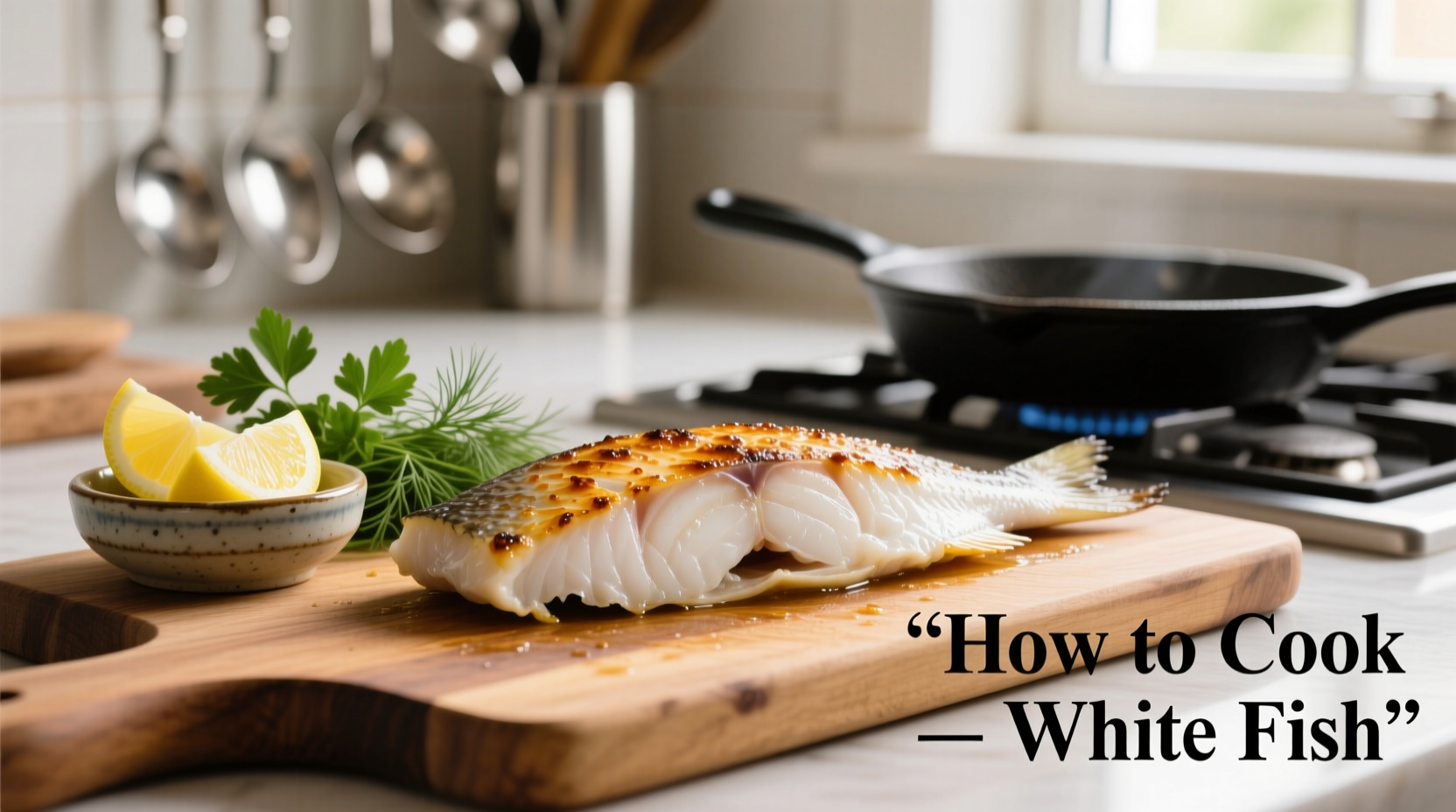Mastering white fish preparation unlocks restaurant-quality results at home with minimal effort. This complete guide delivers professional chef techniques adapted for home kitchens, ensuring perfectly cooked fish every time without dryness or sticking. You'll learn precise timing for different thicknesses, foolproof doneness indicators beyond guesswork, and flavor pairings that elevate simple fish to memorable meals.
Selecting the Right White Fish
Not all white fish behave the same in the kitchen. Understanding their characteristics prevents cooking disasters and ensures optimal results. The FDA recommends purchasing fish from reputable sources that follow proper handling procedures to minimize food safety risks.
| Fish Type | Texture | Best Cooking Method | Flavor Pairing Tip |
|---|---|---|---|
| Cod | Firm, large flakes | Pan-searing, baking | Lemon, dill, capers |
| Haddock | Medium-firm | Pan-frying, grilling | Paprika, parsley, brown butter |
| Halibut | Very firm, meaty | Grilling, roasting | Tarragon, garlic, olive oil |
| Sea Bass | Delicate, buttery | Pan-searing, steaming | Ginger, soy, sesame |
According to Seafood Watch from the Monterey Bay Aquarium, choosing sustainably sourced white fish supports ocean health. Look for MSC (Marine Stewardship Council) certification when purchasing.
Essential Preparation Steps
Proper preparation makes the difference between fish that sticks to the pan and perfectly seared fillets. These non-negotiable steps apply to all cooking methods:
- Dry thoroughly - Pat fish with paper towels until no moisture remains (critical for proper searing)
- Bring to room temperature - Remove from refrigerator 15-20 minutes before cooking
- Season simply - Salt 10-15 minutes before cooking to enhance flavor without drawing out moisture
- Check for bones - Run fingers over the surface to detect and remove any pin bones

Pan-Seared White Fish: Step-by-Step
This restaurant technique works perfectly in home kitchens with the right approach. Follow these precise steps for flawless results:
- Heat 1-2 tablespoons of high-smoke point oil (avocado or grapeseed) in a heavy skillet over medium-high heat until shimmering
- Place fish skin-side down at a 45-degree angle, then gently lay flat to prevent curling
- Cook undisturbed for 3-4 minutes until skin releases naturally from the pan
- Flip carefully using a thin spatula and cook 2-3 minutes more for 1-inch thick fillets
- Finish with a squeeze of fresh lemon juice and herbs
The USDA Food Safety and Inspection Service confirms that fish is safe to eat when it reaches an internal temperature of 145°F (63°C) as measured with a food thermometer. Alternatively, the flesh should be opaque and flake easily with a fork.
Alternative Cooking Methods
Different occasions call for different techniques. These approaches work well with specific scenarios:
Baking for Hands-Off Cooking
Preheat oven to 400°F (200°C). Place fish on a parchment-lined baking sheet, drizzle with olive oil, and bake 10-12 minutes depending on thickness. Baking works best for thicker cuts (1 inch or more) but requires careful timing to prevent drying. The Food Network's test kitchen recommends adding a splash of liquid (wine, broth, or lemon juice) to the baking dish to create steam and maintain moisture.
Grilling for Smoky Flavor
Requires careful attention to prevent sticking. Oil the grates thoroughly, place fish at a 45-degree angle to the grates, and resist moving until it releases naturally. Grill skin-side down first for 4-5 minutes, then flip and finish for 2-3 minutes. Grilling works best with firmer fish like halibut and is unsuitable for delicate varieties like sole.
Doneness Indicators: Beyond Guesswork
Timing varies based on thickness and cooking method. Use these reliable indicators instead of relying solely on time:
- Visual cue - Flesh turns from translucent to opaque throughout
- Texture test - Gently press center; it should feel firm but slightly yielding
- Flake test - Insert fork at an angle and twist; flesh should separate easily along natural lines
- Thermometer - Register 145°F (63°C) at the thickest part
Overcooking is the most common mistake home cooks make with white fish. Remember that fish continues cooking after removal from heat (carryover cooking), so remove it when slightly underdone.
Flavor Enhancement Techniques
Elevate simple white fish with these professional chef techniques:
- Cold pan start - For skin-on fish, place skin-side down in a cold pan with oil, then heat gradually for extra-crispy skin
- Compound butter - Finish with a pat of herb butter that melts into the hot fish
- Aromatic bed - Cook fish on a bed of sliced lemon, herbs, or vegetables for infused flavor
- Acid balance - A splash of vinegar or citrus juice right before serving brightens rich flavors
Avoiding Common White Fish Mistakes
Steer clear of these frequent errors that ruin otherwise good fish:
- Wet fish - Moisture prevents proper searing and causes sticking
- Overcrowding the pan - Lowers temperature and steams instead of sears
- Constant flipping - Prevents proper crust formation
- Over-seasoning - White fish has delicate flavor that's easily overwhelmed
- Using low smoke-point oils - Causes burning and bitter flavors
When cooking frozen white fish, the University of Minnesota Extension recommends thawing in the refrigerator overnight rather than using quick-thaw methods that compromise texture. Cooking from frozen typically requires 50% more cooking time and often yields less optimal results.
Perfect White Fish Every Time
Mastering white fish preparation requires attention to detail but delivers impressive results with minimal effort. By understanding fish characteristics, following proper preparation steps, and using precise doneness indicators, you'll consistently create restaurant-quality dishes at home. Remember that simplicity often yields the best results with delicate white fish—let the quality of the fish shine through with thoughtful seasoning and careful cooking.











 浙公网安备
33010002000092号
浙公网安备
33010002000092号 浙B2-20120091-4
浙B2-20120091-4